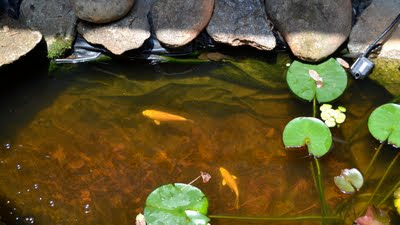After a week back at work, my friend Deb and I met in NC at my brother's. Its still nice here. Here's the lace that's not knitted
There are some new animals
I suggested the names of "Midnight" and "Ink" but that was rejected. They may wind up as "kitty 2" and "kitty 3".
Deb is helping me to improve my hand spindling techniques. She is also teaching me how to make my own graduated color yarn.
HOW TO BLEND TOP TO SPIN GRADUATED COLOR YARN
Pick four colors of top, split in half
Move half of each color to the side for later.
Pick the first two colors that you want to grade from one to the next, split in to five piles
1) 100% one color A
2) 75% color A, 25% color B
3) 50% color A, 50% color B
4) 25% color A, 75% color B
5) 100% color B
Repeat with all colors, making similar piles, steps 2 through 5. You'll have some left over.
Within each pile, pull apart and put back together gently to mix by hand.
Put in baggies and label cause you'll soon be unable to recognize. Decide if you want to spin the left over at the beginning and the end or wherever, or save for another project.
Spin the best you can. IF YOU'RE ON VACATION you use a drop spindle. Repeat with the other halves and make two ply if you want. If you do and you've spun evenly, the color sequences SHOULD match up.
Admire your friend's spinning technique.
Deb also taught me how to spin from the fold.
Decide that you REALLY need the other type of spindle that your friend has (top whorl).
Get tired and go work on some knitting.
Have a glass of wine, get tired, go to bed to rest up for jewelry casting class (more on that later).



























